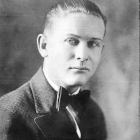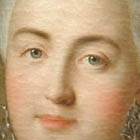Roaring Chicken Tuskingo Chief Shoe boots is my 4th great grandfather. He abducted my 4th great grandmother, Clarinda Ellington, in the last great Indian raid in Kentucky and they had a family. She was rescued and returned to her family.

- A Scotman in Russia
- The First Steps
- Russian Military Flying Schools
- The Imperial All Russia Aero Club
- General Baron Kulbars & Aviation
- The Imperial Russian Technical Society
- The Prototype of the Zeppelin
- Contruction, Aviators & Workmen
- Famous Russian Flying Men
- I.I. Sikorsky
- Foriegn Aviators in Russia
- Heir Fokker's Russian Lady Pilot
- Just Before the War
- Aerial Russia & the British Press
- Aviation & the Russian Press
- By Way of Conclusion

Chapter VI - The Imperial Russian Technical Society
Russian aviation has received invaluable support from the Imperial Russian Technical Society, which in 1909 added an aviation section to its existing sections - "Land," "Water," and "Mining." The President of the Technical Society, Professor Maxime Kovaleysky, became President of the Aviation section and weekly lectures were held during the winter. From 1910 to 1912 the Technical Society took a leading part in the aviation exhibitions held in Petrograd and Moscow. I have before pointed out that aviation in Russia was the cause of an entirely new co-operation between the army and well-known civilians, a co-operation which has undoubtedly done a great deal to establish the national unity which has characterised Russia during the great war. This co-operation is evident in the fact that the second president of the Aviation section of the Technical Society was Colonel Naidenoff, a professor of the Military Staff College. Colonel Naidenoff did much to bring together the various agencies for the education of Russian flying men, and it was much due to him that aviation received the steady support of great technical institutes.
In order to keep in touch with all the latest developments of aviation the Imperial Russian; Technical Society has every year sent representatives to France. Professor N. A. Rinen was one of the representatIves and on his return to Russia he formed an aviation section in the Petrograd Institute of Ways and Communications with a splendidly equipped laboratory. Russian scientists have indeed taken aviation very seriously. No member of the Technical Society has patented an aeroplane invention until it has been carefully studied and discussed by a special expert committee which has included among its members such men as Joukowsky, Kouznctzoff, Slessareff, Pomortzeff, Botezat, and Sikorsky, men well known throughout the whole scientific world. I have occasion frequently to mention Rusisian names which will be unfamiliar to the majority of British readers, but there is such growing interest in Russian affairs in this country that I need make no apology for referring to those fellow-countrymen of mine whose work is not only intimately concerned with the history of Russian aviation, but as a matter of fact intimately concerned with the history of aviation generally.
The Imperial Russian Technical Society has been particularly careful to discourage all freakish futility, and it gave scarcely any support to the impracticable inventions of Tatarinoft and Svertchkoff, which I have described in a preceding chapter. On the other hand, the Society gave generous assistance to Mr. Stchetinin and his partners, Mr. Stcherbakoff and Mr. Vorobieff, and many others scriously working for the benefit of aviation. Stchetinin was a wealthy young man who spent his entire fortune in the development of an aeroplane factory, and thanks to the support he has subsequently received the factory is now established on a sound commercial basis. Another prominent Russian aeroplane constructor is Professor Gakkel, a chief engineer of the Russian Westinghouse Company. He joined the Aviation section of the Imperial Russian Technical Society in 1910 and delivered frequent lectures on his ideas. His first aeroplanes were built at the Russo-Baltic Works at Riga, where the aviation department was directed by Prince Koudasheff. These first machines were an utter failure, and a seaplane built by Professor Gakkel in the spring of 1911 was unable to rise from the water. He persisted, however, and in the summer of the same year he achieved a great success, a tractor biplane constructed by him and piloted by Lieutenant Alechnovitch gaining the first prize at the first Russian Military Aviation Meeting.
Jews were admitted as members of the Imperial Russian Technical Society, and excellent work for the cause of aviation was performed by at least one of them, Mr. Rosenzweig, a clever organizer, to whom the success of the aerial exhibitions was unquestionably due. It was at the Moscow. Exhibition that the Sikorsky aeroplane first attracted considerable attention. This great Russian, who is now only thirty years old, was a student at the Kieff Polytechnic. He is very reserved and shy, dreads publicity, and always listens rather than talks. Perhaps in consequence of this his early work passed almost unnoticed in the aviation world, and it was only when he made his flight on his first giant plane, "The Knight of Russia," that he became something of a national hero. The Imperial Russian Technical Society once arranged a series of remarkable lectures, which had an enormous effect in focussing public opinion on the possibilities of the new science. The first series was delivered by Professor Slessareff, the expert scientist; the second by Mr. Sikorsky, Russia's giant aeroplane pilot and the third by Mr. Kennedy, whose knowledge of the construction of aeroplanes was unrivalled. Among the people attracted by these lectures was Steglau the millionaire, whom I have aheady mentioned. A simple peasant by origin, Mr. Steglau started life as a navvy on drainage construction. He performed his military service, of course, as a private, and after four years went back to his old work, becoming a ganger in a short time. Circumstances enabled him to start business for himself and in a few years he became one of the richest contractors in the Empire. The possession of money made no difference in Mr. Steglau's character. Hei was a millionaire at forty, but he remained the same simple, good-tempered peasant. He began to study the theory of aviation. He designed plans for an aeroplane of his own, built it himself, fitted it with the best engine obtainable, and then flew in it himself. Mr. Steglau as a contractor had been famous for the solidity of his work and he astonished the aviation world in the spring of 1911 by denouncing the use of fabric for the wings of the aeroplane as being far too flimsy and urging that three-ply wood should be used instead. The experts were naturany unconvinced by suggestions coming from a theoretically uneducated man, but in the spring of 1912 Steglau appeared on the aerodrome of the Imperial All Russia Aero Club with his new tractor biplane entirely made of wood and fitted with a hundred horse-power engine.
"Who is going to fly on this machine?" Mr. Steglau was asked.
"I am," was the answer.
"Have you ever done any flying before? "
"Never," was the reply.
Whereupon he climbed into the aeroplane, started the engine, and began to rise from the earth to the stupefaction of the onlookers. He rose to a height of 600 feet and flew above the aerodrome for nearly an hour. His landing was less successful than his rising. He smashed down a fence ten feet high, but his machine was practically undamaged. The ends of the wings were slightly broken, the propeller was smashed, and one of the cylinders of the engine was crumpled. That was all. The pilot himself climbed out of the seat with the same unconcern as might be shown by a coachman who has noticed that there is something wrong with one of the wheels of his carriage, although the shock of the landing had been so great that any ordinary aeroplane must have been smashed to pieces. He was surrounded at once with astonished enquirers.
"There is nothing in the least wonderful in what I have done," said Mr. Steglau. "I have watched other men flying, and I saw how they did it. As soon as I got up into the air I began to think how I should land and" - looking at his machine and the broken fence - " it might have been worse."
The Russian peasant takes a long time to make up his mind, but when he has once determined on a course of action nothing can stop him. In this, indeed, he is very like the Englishman. During the summer of the same year Mr. Steglau flew at the second Military Aviation Meeting, and his apparatus was soon regarded as the safest that had ever been constructed. He never flew without an accident. On one occasion he killed a cow. On another occasion he wrecked the top of a hangar, but whatever else happened neither the pilot nor the machine was eyer seriously damaged. The principal technical defect of his aeroplane was its lack of great lifting power. At the end of 1913, as I have related, Mr Steglau was obliged, by the pressure of his financial associates, to abandon flying, but he has continued his connection with the Imperial Russian Technical Society and has constantly been lavishly generous in the assistance he has given to struggling inventors.
The Imperial Russian Technical Society has given valuable assistance in the development of inventions made by officers of the Russian Flying Corps. Among them were Lieutenant Bogatireff and Lieutenant Kovanko, the son of the famous general. The young man Porohovstchikov, only seventeen years old, made many important aerial inventions and received the congratulations of a committee presided over by the Grand Duke Alexander Michailovitch.
The Aviation Section has always carefully watched foreign inventions and has collected every possible form of information about aviation which has been regularly published in its journal. During the present war it has carefully studied the comparative utility of the various types of machines used at the front. I do not think it would be possible to exaggerate the scientific value of the work performed for aviation by the Imperial Russian Technical Society, and it would be a splendid thing for both countries if a close entente could be established between the Society and those English scientists who are concerned with the conquest of the air.



